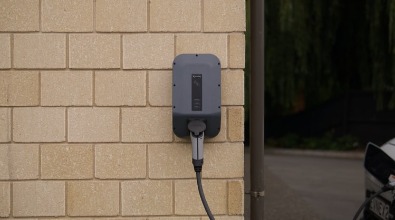10 Electrical Checks You Must do Before Moving Into a New Rental Home
By Jeson Pitt
NFPA states that electrical fire is one of the most significant causes of home damage in the USA. Did you check the electrical materials and connections before moving into your rental home? If not, then you should do it without any further delay.
Here is our list of 10 vital electrical safety checks for your new home â€"
If the property is old, its electrical system is also aging. You might need to call an electrician for some upgrades. Do not plug in too many modern appliances in an old property until your electrician tells you how much load it can handle.

You will find an electrical load center somewhere in the walls of your new house. It will contain breakers if the property is new. If the property is older, there will be fuse conductors. Check for any damage, coins near the fuse, burn marks, warm breakers, no main breaker, and lose breakers.
After checking everything else in the load center, conduct a detailed breaker panel inspection. The circuit breakers should not be corroded or damaged by rodents. Turn the breaker panel on and off multiple times to check if they are working properly.

Outlets that are near any water source are ideally GFCI outlets. It means they are ground fault circuit interrupter (GFCI) protected outlets. These outlets can be secured with a GFCI breaker or another outlet on the same circuit. Test if there is such provision provided or not. Call an electrician if you need help.
If you have aluminum wiring in your house, it’s an old property. The electric connection will need an upgrade if the property is not well maintained. In addition, aluminum wiring is considered less safe in comparison to copper wiring. You might face difficulty in insuring your house with aluminium electrical wiring.
You need to check the number of outlets and switches according to the need of your household or not. Search for three-pronged outlets. Don’t rely on an extension to run your appliances. You also need to evaluate the quality of switches. Watch out for any buzzing sound, heating of buttons, or discoloration. Call an electrician immediately if you notice any such sign.
Safety of exterior outlets is as important as the safety of the interior outlet. They must be sealed, GFCI protected, and covered for weather-related hazards. If anything is plugged into the exterior outlet, there should be holes in the outlet cover for that connection.

It is not professional and entirely safe to wire in receptacles using push-in connections on the back. A binding head screw on the side should be applied to the wire in the receptacles.
Kids sometimes throw dangerous things like pennies or pens in your electric outlets. Thus the National Electrical Code made it compulsory for outlets to be tamper-resistant. Which means that outlets in children’s reach need an inner shield. It is a plastic barrier behind the receptacle opening.

Check the condition of the appliances provided by your landlord. If they are old, check for any defects in their wiring or chords. Also, check the state of safety equipment like smoke alarms and breaker box.
Endnote!
All checks mentioned above are for you and your family’s safety. You should talk to your landlord if there is an electrical hazard on the property. If your landlord doesn’t understand your concern, it may be time to look for another property.
Author Bio:
Jeson Pitt works with the marketing department of D&F Liquidators and regularly writes to sharehis knowledge, while enlightening people about electrical products and solving their electrical dilemmas. He’s got the industry insights that you can count on along with years of experience in the field. Jeson lives in Hayward, CA and loves to explore different cuisines that the food trucks in the Bay area have to offer.
